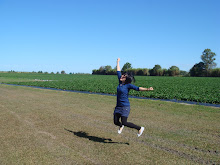Main material used to decorate book - felt cloth


Finished Storybook

















Finally, the storybook is created!
After printing the book, our group decided the book needed something more, to increase its appeal to young readers. It soon struck us, that young children needed tactile interaction with the book. Therefore, we started experimenting with various materials, and finally used felt cloth, plastic eyes and glitter glue to decorate the images.
Different coloured felt cloth are cut and pasted onto the pages, and for one particular page, we cut out a cardboard door, for the young reader to be able to interact with.
Reflections:
My group was presented with a cash prize for being the best storybook in class, during the last nm2208 lecture. It was certainly a pleasant surprise, nothing as delightful as hearing other people sing praises of your hard work.
A lot of work has been put into the storybook, from story conceptualisation, to the final output. The assignment allowed me to experience a taste of satisfaction, seeing your ideas materialising from your own imagination, to digital format, and finally into something you're able to hold. Also, I got to apply all the design principles I had learnt in the previous lectures and assignments into creating the storybook.
Most importantly, I learnt how to create a professional design document and I recognised its importance, in terms of keeping me on track with what we wanted to achieve and the steps taken towards it. A constant need to justify the many decisions involved in the design process, allowed us to take a step back and re-confirm if we were making the right choices.
In all, this storybook assignment, was certainly a memorable and enriching experience.



































